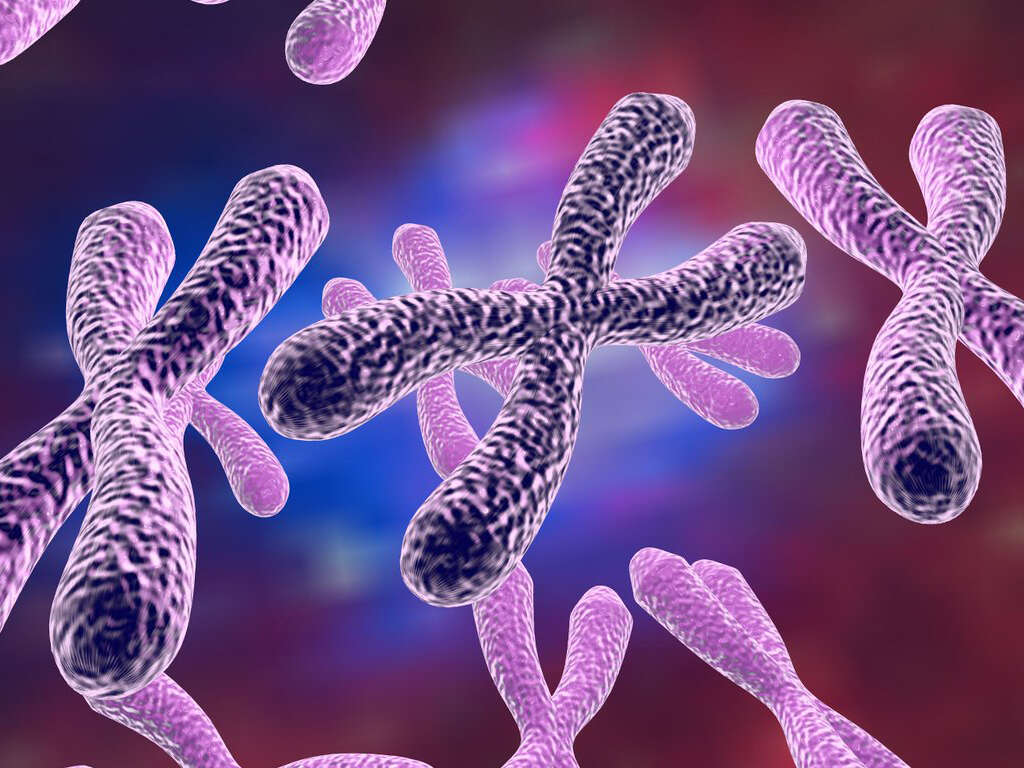10 Williams Syndrome Symptoms
 Article Sources
Article Sources
- 1. Lazier, J., MD. (2020, December 05). Williams Syndrome Clinical Presentation: History, Physical Examination. Retrieved December 16, 2020, from https://emedicine.medscape.com/article/893149-clinical
- 2. Ko, Jung Min. (2015). Genetic Syndromes associated with Congenital Heart Disease. Korean circulation journal. 45. 357-61. 10.4070/kcj.2015.45.5.357.
Williams syndrome is a genetic disorder that is present at birth. It is most often the result of a genetic mutation in the form of a deletion of a piece of a chromosome (number 7). Moreover, it is very rare, since it is estimated to occur in 1 per 7,500-20,000 births.1Lazier, J., MD. (2020, December 05). Williams Syndrome Clinical Presentation: History, Physical Examination. Retrieved December 16, 2020, from https://emedicine.medscape.com/article/893149-clinical
Williams syndrome is characterized by certain manifestations, including distinctive facial features, cardiovascular anomalies, elevated levels of calcium in the blood (hypercalcemia), developmental delays (cognitive, motor, and social), and specific behavioral patterns. Unfortunately, there is no cure for this syndrome. Given its complex clinical presentation, management usually requires a multidisciplinary approach that focuses on the patient’s individual symptoms.

1. Poor Feeding
Poor feeding refers to a child’s lack of interest in feeding or an inability to receive proper nutrition. It usually occurs in newborns and young infants, and it can be caused by a myriad of conditions. For instance, infections, metabolic diseases, genetic disorders, neurological conditions, etc. can cause feeding problems. Possible indicators of poor feeding include malnutrition, dehydration, and failure to thrive. In any case, a child with poor feeding should be closely monitored.
Poor feeding is a nonspecific symptom of Williams Syndrome. Infants with this condition tend to have generalized hypotonia or a decreased muscle tone all over the body. Hypotonia can impair the child’s ability to assume and control oral voluntary movements, which can partially explain poor feeding. For instance, children with Williams syndrome may have problems sucking, swallowing, and manipulating solid food. Additionally, children with this condition can present with gastrointestinal problems that can further impact hunger and motivation to feed. Ultimately, poor feeding in Williams syndrome can lead to a failure to increase weight and grow at the expected rate (failure to thrive). Similarly, developmental milestones can also be delayed (i.e. rolling over, sitting, speaking).

2. Small Teeth
Some infants with Williams syndrome may develop dental abnormalities. For instance, a common dental issue in these patients is microdontia or the development of teeth that appear smaller than usual. Importantly, microdontia can be associated with several genetic syndromes; hence, it is nonspecific for Williams syndrome.
Other common dental abnormalities in Williams syndrome include enamel hypoplasia (deficient teeth enamel), malocclusion (when upper and lower teeth don’t meet properly), and absence of one or more primary or secondary teeth.

3. Small Head Size
Microcephaly is a birth defect where a newborn’s head is much smaller than what is normal for other babies of the same age and sex. Normally, during pregnancy, the brain develops and the head grows along with it. However, if the brain does not develop properly, microcephaly can occur. Importantly, this can occur alone or in combination with other congenital defects.
About a third of children with Williams syndrome are born with microcephaly.1Lazier, J., MD. (2020, December 05). Williams Syndrome Clinical Presentation: History, Physical Examination. Retrieved December 16, 2020, from https://emedicine.medscape.com/article/893149-clinical Unfortunately, some children with Williams syndrome that also have microcephaly can have developmental issues, such as speech and/or movement, difficulty with balance and coordination, and/or intellectual disabilities. However, others may not develop significant complications of microcephaly.

4. Flat Nasal Bridge
The nasal bridge refers to the top part of the nose that separates the eyes. This saddle-shaped area lays mostly on the nasal bone (vs cartilage). In general, the morphology of the nose bridge can vary from person to person; however, some people can have nasal bridge deformities from birth (congenital). Although a rare finding, a low or flattened nasal bridge can be present from the moment a person is born. It can be the result of birth defects (i.e. fetal alcohol syndrome), infectious diseases (i.e. congenital syphilis), or congenital syndromes (i.e. Down syndrome, Williams syndrome).
People with Williams syndrome can show several characteristic facial features. For instance, a low nasal bridge, along with a small upturned nose, can be typically seen in children with this syndrome. However, as established, this sign is not exclusive of Williams syndrome. Other common facial features include prominent lips, a wide mouth, full cheeks, a small jaw, large ears, and epicanthal folds (vertical skin folds that run from the upper eyelid to the inner corner of the eye).

5. Strabismus
Strabismus is a visual disorder in which there is a misalignment of one eye in relation to the other. As a result, the eyes fail to simultaneously focus on the same image. Strabismus can be present since birth (congenital); however, it can also appear in adulthood. If the misalignment is present from childhood, it is unlikely that double vision will be a symptom. This occurs because the developing brain in a child will actively suppress one of the images to avoid double vision. Unfortunately, if congenital strabismus is left untreated, amblyopia or permanent visual impairment can occur in the eye where the image is constantly suppressed.
People with Williams syndrome can show specific ocular findings including strabismus and amblyopia. Most commonly, affected children experience a type of strabismus that causes an inward deviation of one or both eyes (infantile esotropia). Moreover, it is not uncommon for esotropia to coexist with another type of strabismus known as dissociated vertical deviation (DVD), a condition where one eye may drift upward when not in use.

6. Chest Pain
In most cases, chest pain in children is not related to heart problems. Unfortunately, some children are born with cardiac abnormalities (congenital) that may cause chest pain as a symptom. For instance, roughly 75% of children with Williams syndrome are born with congenital heart defects.2Ko, Jung Min. (2015). Genetic Syndromes associated with Congenital Heart Disease. Korean circulation journal. 45. 357-61. 10.4070/kcj.2015.45.5.357. Specifically, supravalvar aortic stenosis is the most frequent heart defect seen in these patients.
In supravalvar aortic stenosis, the main artery that leaves the lower left chamber of the heart (aorta), becomes unusually narrow (stenosis) in the area above the aortic valve. According to the degree of narrowing of the aorta, symptoms like chest pain, fatigue, dizziness, and temporary loss of consciousness can develop. Other possible cardiac lesions in this syndrome include pulmonary stenosis and mitral valve regurgitation.

7. Abdominal Pain
Abdominal pain can be a symptom of a variety of diseases. People with Williams syndrome are likely to experience gastrointestinal problems at some point during their lives. Specifically, children with the disease can experience abnormal bowel movement patterns (i.e. constipation, diarrhea) and acid reflux that can contribute to chronic abdominal pain. Moreover, during adulthood, abdominal pain can also occur due to the presence of other (less common) gastrointestinal conditions like diverticulitis and celiac disease.
It is not uncommon for infants with Williams syndrome to have hypercalcemia or elevated levels of calcium in the bloodstream. As a result, they can experience abdominal and muscle pain, loss of appetite, irritability, fatigue, and confusion. Fortunately, calcium levels normalize around the first year of age; however, rarely hypercalcemia can continue in adulthood.

8. Decreased Muscle Tone
It is important to understand that the muscles in your body are never completely relaxed. Instead, they maintain a basal amount of tension, also known as muscle tone. A decreased muscle tone, also known as hypotonia, can be present in a variety of conditions. Moreover, hypotonia is usually diagnosed soon after birth, but it can also develop later on.
Children with Williams syndrome commonly present with a decreased muscle tone from birth. In Williams syndrome, hypotonia, along with hyperextensible joints, can contribute to a delay in reaching motor skills milestones. Hence, children with this condition may have trouble performing activities (i.e. rolling over, sitting without support, or walking) that other children their age may already be doing. As mentioned, hypotonia may also cause feeding problems in these patients, due to sucking or swallowing difficulties.

9. Hypersensitivity to Sounds
Hyperacusis refers to a rare hearing symptom that causes a heightened sensitivity to certain volume ranges of sound. A person with this condition can have difficulty tolerating everyday environmental noises (i.e. telephones), and may also react negatively to unusually loud or high-pitched sounds. People with hyperacusis may report ear pain or discomfort to certain sounds. Moreover, this condition can be debilitating and result in stress and anxiety (i.e. “panic attacks”).
Children with this syndrome can present with hyperacusis, becoming extremely sensitive to sounds. Also, adolescents and adults with Williams syndrome can develop progressive high-frequency hearing loss.

10. Signs of Intellectual Disability
Intellectual disability is a term that describes problems with mental abilities that impact intellectual functioning (problem-solving, learning) and adaptive functioning (independence, communication). Moreover, it can be present from birth or result from a disease or injury later on. There are several degrees of intellectual disability (mild, moderate, severe, and profound); thus, the signs of this condition may vary accordingly. Early signs of an intellectual disability can include delayed developmental milestones (rolling over, witting, walking), difficulty recalling things, challenges with problem-solving, difficulty understanding social rules, learning disabilities, communication problems, and speech delays.
Children with Williams syndrome typically have a mild-to-moderate intellectual disability. However, there is wide variability among individuals. Most adults with Williams syndrome will require some form of supervision or daily care of their caregivers. Unfortunately, few are able to live entirely independently.











